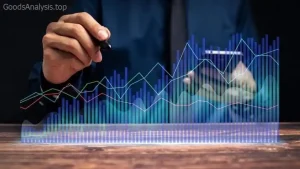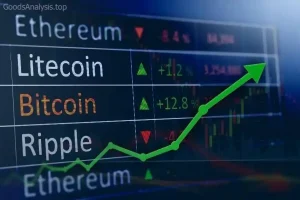If you’re reading this, you’re probably considering taking your first steps into the world of ETFs (Exchange-Traded Funds). Whether you’re nearing retirement, a seasoned investor looking to diversify, or just someone curious about how ETFs work, this guide is here to help you out. I’ve been around long enough to see trends come and go, and let me tell you, ETFs are one of the smartest, most versatile investment tools out there. But like any investment, there are things you need to know before you dive in.
So, let’s break it all down, step by step, with a bit of humor and plenty of practical advice.
What Is an ETF, Anyway?
At its core, an Exchange-Traded Fund (ETF) is a type of investment fund that holds a collection of assets like stocks, bonds, or commodities, and it trades on stock exchanges just like individual stocks. The beauty of an ETF is that it gives you exposure to a wide variety of investments with just one purchase. Think of it as buying a basket of eggs, but each egg represents a different company, industry, or asset class.
ETFs are passive investments (for the most part) that aim to track a specific market index, such as the S&P 500, or focus on a particular sector, like technology or energy. They’re a way to spread your risk without having to pick individual stocks. You get diversification with the potential for solid returns over time.
Why Should You Invest in ETFs?
- Diversification: By investing in an ETF, you’re automatically diversifying your portfolio. For example, an ETF tracking the S&P 500 gives you a slice of 500 different companies. This reduces the risk of putting all your eggs in one basket (though I still wouldn’t advise putting all your eggs in any one basket, ETF or not).
- Low Costs: ETFs typically have lower management fees compared to actively managed funds. Since most ETFs are passively managed (they track an index rather than trying to beat it), fund managers don’t need to be as involved, which keeps costs down.
- Liquidity: You can buy and sell ETFs just like regular stocks, meaning you’re not locked into long-term commitments. This flexibility makes them a great option for people who don’t want to be tied to an investment for years.
- Transparency: Most ETFs disclose their holdings daily, so you know exactly what you’re investing in. If you don’t like the stock in your ETF, you can simply sell it and buy into something else. You won’t find that kind of transparency in many other investment vehicles.
- Tax Efficiency: ETFs are generally more tax-efficient than mutual funds due to their structure. But, be sure to check with a tax professional because tax rules can vary by region and type of ETF.
How Do You Start Investing in ETFs?
Great question! Now that you understand the basics, let’s talk about how to get started. It’s actually much simpler than you might think.

1. Choose a Brokerage Account
Before you can buy an ETF, you need to open a brokerage account. You can choose from many brokers, including well-known names like:
- Vanguard
- Fidelity
- Charles Schwab
- Robinhood
- E*TRADE
When choosing a broker, look for the following:
- Low Fees: Some brokers charge fees for every trade, while others offer commission-free trades. Over time, these savings can add up.
- Account Types: Make sure the broker supports the type of account you want to open—whether that’s a taxable brokerage account, a retirement account (like an IRA), or something else.
- Ease of Use: The interface should be simple to navigate. You don’t need anything too complicated at first—just something that lets you trade ETFs without a hassle.
2. Select Your ETFs
Next, you’ll want to decide which ETFs to buy. There are thousands out there, covering a wide range of sectors, industries, and investment strategies. Here are a few categories to consider:
- Broad Market ETFs: These track large market indexes like the S&P 500 or the Total Stock Market. They’re ideal for beginners because they give you a broad exposure to the market. Example: SPDR S&P 500 ETF (SPY).
- Sector-Specific ETFs: If you’re interested in a particular sector, such as technology or healthcare, there are ETFs focused on that. For example, the Technology Select Sector SPDR Fund (XLK).
- Bond ETFs: If you want to add bonds to your portfolio for stability, there are ETFs that focus on government, corporate, or international bonds. Example: iShares Core U.S. Aggregate Bond ETF (AGG).
- International ETFs: These give you exposure to markets outside of your home country. For example, the Vanguard FTSE All-World ex-US ETF (VEU) gives you global exposure, excluding the United States.

When selecting an ETF, look at the following:
- Expense Ratio: The cost of managing the fund. Lower is better.
- Performance History: While past performance doesn’t guarantee future returns, it gives you a sense of how the ETF has handled different market conditions.
- Holdings: Check what’s inside the ETF—are there individual companies or sectors that you want to own?
3. Place Your Order
Once you’ve chosen your ETFs, it’s time to place your order. You can buy ETFs using either a market order (buying at the current market price) or a limit order (specifying the price you’re willing to pay). For beginners, a market order is usually the easiest.
4. Monitor Your Investments
After buying your ETFs, it’s important to keep an eye on them. However, unlike individual stocks, ETFs are usually long-term investments, so don’t panic if they fluctuate in value on a daily basis. You’re in it for the long haul, so try to focus on the big picture.
It’s a good idea to revisit your portfolio every 6-12 months to ensure it still aligns with your goals.
The Potential Risks of ETFs
Like any investment, ETFs come with risks. Here are a few things to keep in mind:
- Market Risk: If the overall market goes down, your ETFs will likely go down as well. However, the risk is spread out across different stocks or assets, which helps mitigate the impact.
- Liquidity Risk: While ETFs are generally liquid, some niche ETFs can be harder to sell if you need to liquidate quickly. It’s a good idea to focus on more popular ETFs for better liquidity.
- Tracking Error: Sometimes an ETF doesn’t perfectly track the index it’s supposed to. While this is rare, it’s still something to keep in mind.
- Over-Diversification: While diversification is good, you don’t want to overdo it. If you own too many different ETFs, you could end up with an overly complex portfolio that’s hard to manage.

What Do Real People Think About ETFs?
It’s always good to hear from a variety of people when considering an investment. Here are some opinions from different folks:
- Sophia, 45, USA: “I started investing in ETFs after my financial advisor recommended them. I like that they give me broad exposure without requiring me to pick individual stocks. My portfolio has been growing steadily, and I feel much more confident about my financial future.”
- Liu Wei, 38, China: “ETFs have been a great way to diversify my investments across different countries and sectors. I especially like the international ETFs that allow me to invest in markets outside of China. However, I’ve learned to be careful about certain sector-specific ETFs that can be more volatile.”
- Raj, 58, India: “I’ve been investing in ETFs for a few years now, mostly in the S&P 500 ETFs. The low fees and ease of trading make them ideal for someone like me who doesn’t want to spend all day tracking individual stocks.”
- Maria, 50, Spain: “For me, ETFs are a way to invest without too much effort. I’m not trying to get rich overnight, just build a solid nest egg. The diversification and low cost are a huge plus, though I do keep an eye on market trends to ensure I’m not too exposed to risk.”
Final Thoughts
Investing in ETFs is a smart and accessible way to grow your wealth over time. While it’s not without its risks, the rewards of diversification, low cost, and flexibility are hard to beat. If you’re just starting out, take your time and don’t be afraid to ask for advice from a trusted financial advisor.
Remember, the goal isn’t to get rich overnight—it’s to make steady, informed decisions that’ll pay off in the long run.
So go ahead, start researching those ETFs, and happy investing!









